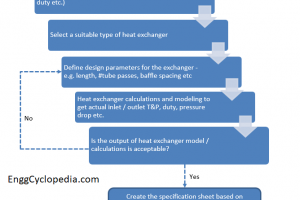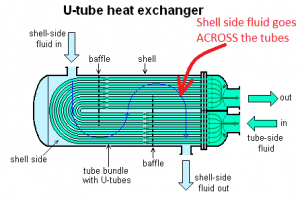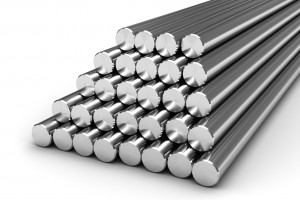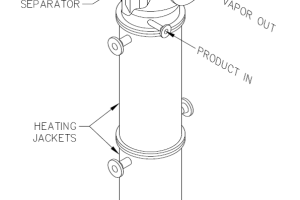Double pipe heat exchanger consists of two concentric pipes. One fluid flows through the inner pipe and the other fluid flows through the space created between two concentric pipes. The direction of fluid flow may be in a co-current or counter-current fashion. Transfer of heat takes place through the wall of tubes.
Table of Content
1. What is Double Pipe Heat Exchanger?
2. Construction of Double Pipe Heat Exchanger
3. Double Pipe Heat Exchanger Applications
4. Design & Calculations
What is Double Pipe Heat Exchanger?
It is important to study how heat is transferred between two fluids flowing through concentric tubes. The working principle is based on the transfer of heat from one fluid to another through a common wall, which in this case is the inner pipe.
The heat transfer process in a double pipe heat exchanger can be described as follows:
- The hot fluid enters the outer pipe and flows through the annular space. It transfers heat to the inner pipe and the fluid flowing inside it.
- As the hot fluid flows through the annulus, it cools down while the fluid inside the inner pipe gets heated up.
- The cooled hot fluid exits the outer pipe and the heated fluid inside the inner pipe exits the heat exchanger.
- The heat exchanger can be designed for counter-current or co-current flow. Arrangement of fluid flow affects the heat transfer rate and pressure drop.
This is detailed of study heat exchanger working principle.
Construction of Double Pipe Heat Exchanger
A double pipe heat exchanger is constructed by using two concentric pipes, one inside the other. The inner pipe and outer pipe are usually made of metal, such as stainless steel, copper, or titanium, but can also be made of other materials such as plastic. The choice of material depends on the chemical properties of the fluids, the temperature range, and the required corrosion resistance.
The inner pipe and outer pipe are typically connected at the inlet and outlet by welding, brazing, or mechanical fittings. The two pipes can be connected in a variety of ways, including a hairpin configuration, a U-tube configuration, or a straight-tube configuration.
Some double pipe heat exchanger designs also incorporate turbulators or fins on the inner pipe to increase the heat transfer coefficient. Additionally, to enhance the heat transfer coefficient and reduce the pressure drop, the inner pipe can be corrugated.
Finally, the heat exchanger is typically mounted on a support structure, such as a frame or skid, to ensure that it is stable and secure. The support structure also allows for easy access to the heat exchanger for cleaning and maintenance.
ASME and TEMA standards should be considered for design of double pipe heat exchanger.
Double Pipe Heat Exchanger Applications
Double pipe heat exchangers are used in HVAC systems as a chilled water coils or hot water coils. It is also used for air preheating or cooling, dehumidification and to recover energy from exhaust air.
Double pipe heat exchangers are commonly used in refrigeration systems to transfer heat between the refrigerant and the fluid in order to cool a product. Some of the specific applications include: Evaporators, Condensers, Air-cooled condensers, Water-cooled condensers, Chiller.
In chemical processing double pipe heat exchangers are used for reactor cooling, process heating, heat recovery and to control temperature in distillation column.
In pharmaceutical industries double pipe heat exchangers are used for temperature control of various processes such as fermentation, crystallization and dying.
Apart from these, double pipe heat exchangers are used in petroleum refining, food processing, automotive and marine industries.
Advantages
- Double pipe heat exchangers have a simple and compact design, which makes them easy to install and maintain.
- Double pipe heat exchangers have a relatively high heat transfer coefficient, which results in a high heat transfer efficiency.
- Double pipe heat exchangers are relatively inexpensive to manufacture and maintain.
- Double pipe heat exchangers can handle a wide range of fluid properties and temperatures and can be used in a variety of industrial and HVAC applications.
- Due to their simple structure double pipe heat exchangers can be easily cleaned and maintained.
Disadvantages
- Due to the simple design, double pipe heat exchangers provide a comparatively low heat transfer area as compared to other types of heat exchangers. The heat transfer area is limited by the size of the inner pipe, which can make it difficult to transfer large amounts of heat which eventually results in limited thermal performance.
- Double pipe heat exchangers have a limited pressure drop, which can result in limitations on the maximum flow rate of the fluids.
- Double pipe heat exchangers are limited to low-viscosity fluids, high viscosity fluids may cause problems with pressure drop and heat transfer.
- Double pipe heat exchangers are limited to low-pressure applications due to the limited thickness of the pipe walls.
- In conclusion, Double pipe heat exchangers are well suited for applications where compactness, low cost, and ease of maintenance are important. However, their thermal performance is limited and they may not be suitable for high-pressure or high-viscosity fluids.
Design & Calculations
The design of a double pipe heat exchanger involves determining the required heat transfer rate, heat transfer coefficient, allowable pressure drop, the length and diameter of tube, tube material.
Initially, Energy balance calculation is done for designing a heat exchanger to determine operating parameters for hot and cold fluids such as inlet / outlet temperatures and flow rates.
We have to decide whether the heat exchanger will have counter-current or co-current flow. This will affect the heat transfer and pressure drop. Understanding LMTD for heat exchanger is very important because the flow arrangement is selected by calculation of LMTD. Here is the detail calculation of LMTD. Also this is a quick calculator for LMTD calculation.
Choose the inner and outer tube size and length based on the flow rate of the fluids, the required heat transfer rate, and the available space. Select a tube material that is suitable for the fluid properties, the temperature range and the required corrosion resistance. Common materials include stainless steel, copper, titanium, or plastic.
The heat transfer process in a double pipe heat exchanger can be described using the concept of the overall heat transfer coefficient (U), which is the heat transferred per unit surface area per unit temperature difference.
For calculation of individual heat transfer coefficient we can use sieder-tate equation for laminar flow. And for turbulent flow we can use Petukhov and Kirillov equation modified by Gnielinski. The heat transfer coefficient can be increased by using turbulators or fins on the inner pipe or by using a corrugated inner pipe.
Apart from these factors, it is important to consider calculations of fouling factor to achieve maximum efficiency of heat exchanger.
The pressure drop across the heat exchanger must be taken into consideration to ensure that the pump can handle the pressure. Pressure drop is the pressure difference between the inlet and outlet of the heat exchanger.
The pressure drop in straight pipe can be calculated by using,
Where, f = 64/Re for laminar flow in inner pipe.
f = (64 / Re) * [ (1 - κ²) / ( 1 + κ² + (1 - κ²) / ln κ) ] & κ = Do / D1 for laminar flow in annular pipe
f = 0.3673 * Re -0.2314 for turbulent flow in both inner and outer pipe.
Use this calculators for estimation of pressure drop.
To study detail design procedure and details of simulation software used for design the of heat exchangers, click here.






